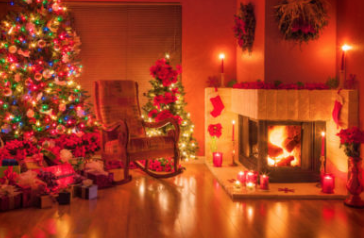9 Ways to Minimize Holiday Fire Risks
Johnna Kaplan

The winter holidays are beloved for the warmth and light they bring to a cold, dark season. But this wondrous time of year isn’t free from danger. According to the American Red Cross, almost 47,000 fires occur during the winter holidays, taking over 500 lives, injuring thousands of people, and resulting in hundreds of millions of dollars in property damage.
Fortunately, many holiday fire risks can be minimized with a little care and planning. Here’s how to avoid some common causes of holiday fires.
1. Be Safe with Christmas Trees
Place trees (and fir wreaths and garlands) three feet away from heat sources like fireplaces and radiators, and never use lit candles to decorate a tree. (Use battery-operated ones to achieve that effect.) Check that artificial trees, as well as decorations, are made of flame-resistant or flame-retardant materials.
If decorating a live tree, choose one that is freshly cut, with intact needles, and water it daily to prevent it from becoming dry. Once it does begin to dry out and drop needles, it’s time to discard your tree. Although Christmas tree fires are not common, the explosiveness of dry trees makes them very dangerous if they do occur.
Use a tree stand that can’t tip over and be sure to unplug tree lights overnight and whenever you leave the house.
2. Give Candles Their Distance
The U.S. Fire Administration (USFA) reports that 56% of candle fires happen because something flammable is left too close to a burning candle. Always keep candles at least a foot away from anything else that could catch fire like ornaments or curtains. (Give other sources of heat, like portable heaters, even more space.)
If placing candles in windows, choose battery-powered lights. Don’t leave candles burning when you’re asleep or away from home; in fact, you should extinguish flames whenever you leave the room. Whenever you burn candles, place them in sturdy holders that can’t tip over, and situate them where they are unlikely to be accidentally knocked over. Read More




























